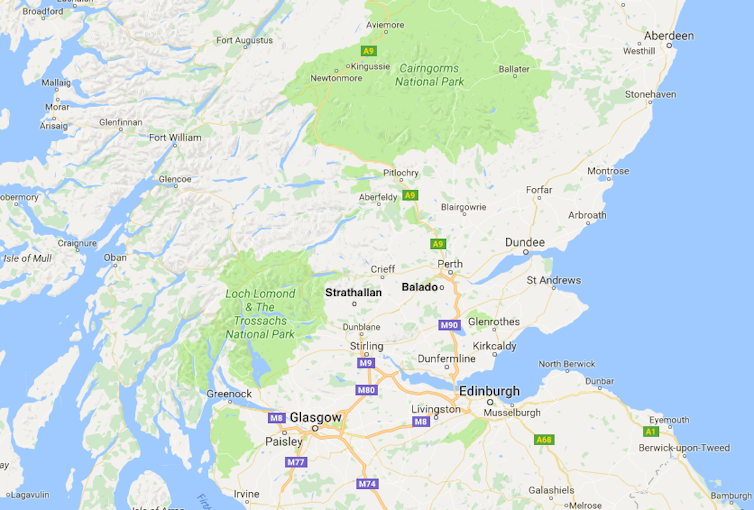Scotland’s best-known music festival, T in the Park, is taking time off from its usual three-day summer event in the Perthshire countryside for the first time in two decades. Organiser DF Concerts is rumoured to be reinventing and rebranding the festival for next year, turning it into a more niche event, staged in the heart of Glasgow and aimed at a more mature audience. It has said it will return with a camping event in 2018, but no one knows what form this will take or how it might compare with the weekend events, attended by 250,000-plus, of T in the Park’s heyday.
Coming on the back of recent UK festival collapses such as RockNess and The Big Chill, you might wonder whether something is changing. Are huge festivals going out of fashion in the face of the explosion of boutique events in recent years – or is something else at play?
T in the Park has become a mainstay of mainstream Scottish entertainment since its launch in 1994. Starting with a 17,000-strong event at Strathclyde Country Park near Glasgow with headliners like Primal Scream, Oasis and Bjork, the festival moved to Balado airfield in Perthshire several years later to accommodate its rapid growth.
Always sponsored by Scottish lager brand Tennent’s, T in the Park saw armies of festival goers boarding buses year after year from all over Scotland and beyond. It has long been associated with extremely muddy camping, world-beating acts like Beyoncé and Red Hot Chilli Peppers, amazing crowds and lots and lots of booze.

Festival wherefores
Certainly no one disputes the benefits of big festivals. A 2014 study of T in the Park showed that the economic benefit to the region of Perth and Kinross was £2.7m, up 91% on 2005, while for Scotland it was £15.4m.
Such events increase the profile of the destination and encourage people to come back as tourists. Attending T in the Park has also been a rite of passage that helps to cement friendships and allows engagement with the latest music, art or culture. And it gave emerging musicians and bands an opportunity to cut their teeth in front of an extremely passionate Scottish crowd.
So what started to go wrong? T in the Park was forced to leave Balado last year after the Health and Safety Executive decided an oil pipeline that ran under the site made it dangerous. It shifted a few miles west to Strathallan castle (see map), but stiff opposition from environmentalists worried about things like the impact on roads and nesting ospreys will not have helped.

Tighter public finances mean that all festivals in Scotland now have to pay for their own policing, which in the case of T in the Park will be a formidable amount of money. Combined with increasing planning constraints and regulations as UK councils become more and more risk averse, this has made life harder for organsiers.
Three drug-related deaths at the 2016 event brought bad publicity. Then there is heightened competition, from the broad range of UK festivals but particularly from overseas events such as EXIT Festival in Serbia and Festival Internacional de Benicàssim in Spain. These offer sunshine instead of rain, and cheaper ticket prices – EXIT, for example, is offering weekend tickets for 2017 at £97.90, compared to more than £200 for T in the Park last summer.

Life cycles
But T in the Park might also just be one more festival that has reached the end of its life cycle. When it comes to the life cycles of organisations, researchers have identified five key stages – establishment, recognition, prominence, maturity/consolidation and rejuvenation/decline. These arguably mirror what happens to many contemporary events and festivals.
Some of the largest and best-known events – Glastonbury, for example – seem to defy the usual life cycle trends and consolidate year after year. But most end up going into decline. In an extremely crowded marketplace – there are now more than 1,000 festivals in the UK, double that of a decade ago – many struggle to meet what are seen as the key performance indicators. These include having a unique and varied offering, a transparent purpose, robust governance, strong resident and community engagement, a loyal customer base and being a “must visit” event.
To avoid decline, you need to be agile and flexible enough to consistently reinvent and rejuvenate yourself. T in the Park has been in transition since it left Balado last year – and finding a way back over the next two years will arguably be the greatest challenge it has ever faced.
But the huge number of festivals in the UK and elsewhere suggests there is still high demand for a holiday from reality in a field in the summertime. The changing face of that demand has not made it easy for big festivals, but this is not necessarily something to mourn. If T in the Park ends up going out to pasture, like The Big Chill, RockNess, Oxegen, ATP, Cloud 9 and all the rest, promoters will always find other vehicles for live music.

